For various reasons I don’t keep a sleeping bag in my Get Home Bag or my everyday hiking kit. Today I thought I’d talk about other options than having a sleeping bag permanently stored in your kit.
First of all I think the best choice a person could make for a serious bug-out is a good sleeping bag, especially up here in the Great White North. Having said that, keeping a sleeping bag in your pack all the time has two disadvantages: 1.) They’re relatively heavy and 2.) If you keep your sleeping bag compressed all the time it will eventually lose its loft.
I keep my sleeping bags in a loose bag until I need them. With a good sleeping bag starting at $150 and up these days I want to protect my investment.
Purpose
The goal is to carry something in my pack that is light in weight, but warm enough to keep me alive if I have to use it to spend the night out. This means carrying different items during the various seasons up here in Maine.
I think it’s important to point out that these items are more for a regular day hiking kit or a get home bag (GHB) than a full five day hiking pack or a long term Bug-Out Bag. Unless you’re very skilled and hard-core you’ll probably want to carry something heavier (like a sleeping bag) if you’re going for an over nighter or a multiple day hike.
The idea here is to have something with you on a regular hike that’s light enough to keep you warm if you get caught out overnight, but not heavy enough to kill you hiking it up a mountain because of its weight.
For example: if I wanted to hike a mountain here in Maine this time of year (it’s May 11, 2014 as I write this) and the temperature today was around 72 degrees. Tonight it could easily go down into the 30′s. That means if I go out on a day hike carrying what the typical day hiker carries, (water bottle, power bar, and maybe an extra t-shirt ) the last thing I’m thinking about is that it’s going to get cold that night. I’ll sweat on the hike getting my clothes wet, which means if I get lost and have to spend a night out with wet clothes, no shelter and no way to start a fire, I’m a prime candidate for hypothermia.
Bear in mind this is about survival and not comfort. That’s not saying that if you use these as effectively as possible they won’t keep you warm.
Knowledge
A quick word here about knowledge and skills. If all you have is a poncho liner and poncho and the temperature is going into the 30′s you are going to get cold; however, if you start a fire and reflect the heat back into a shelter you’ve found or made you’ll be much warmer and might even be able to catnap through the night.
This type of knowledge is a force multiplier, which means if you take your piece of gear by itself it will help a little. But if you combine it with your knowledge of starting a fire you will not only survive the night you’ll be comfortable as well. They become more effective when used together.
This is true of any gear you put in your pack. Try to make sure it has multiple uses or is important enough to have a spot.
Wool Blanket
There are many good things to be said about wool. When it gets wet it still retains a good deal of its ability to keep you warm unlike cotton, which will kill you if it gets wet in cold weather.There are many kinds of wool blankets out there on the market. I bought a military surplus blanket off Amazon and so far it’s held up pretty good.
You can keep it rolled up tight and it won’t lose its ability to keep you warm, which is what happens to a sleeping bag after it’s lost its loft. This means you can put it in your pack and forget about it until you need it.
The wonderful thing about a wool blanket is the rage of uses you can get out of it. There are many YouTube videos out showing many ways to use the blanket as a cloak. All you need is a way to pin it and it’ll become a great cloak or overcoat to wear while you’re in the woods.
It can be used in different ways such as a cloak, or as a shelter, or just roll up in it and sleep in it next to a fire. If a spark lands on the blanket it won’t cause the same damage as it would on a synthetic sleeping bag.
Don’t forget that in cold weather a big part of the battle for staying warm is to put some insulation between you and the ground. If you don’t have a sleeping pad gather some leaves or fir boughs and try to put six inches of this insulating material between you and the ground. This will help keep you warm.
The wool blanket is quite a bit heavier than the poncho liner, but it’s also a lot warmer on its own
Poncho Liner and Poncho
To be fair I almost always use the poncho liner in conjunction with the poncho unless I’m in the southern latitudes. When I was in Gitmo, Cuba sleeping on a cot I used a poncho liner, but it was easily in the 70′s at night with a light sea breeze, so it was no big deal. In North Carolina and other southern states it worked well in the summer because it’s so hot down there. In the fall I would either pair it up with the poncho or use a light sleeping bag.
Up here in Maine I’ve attached it to the military poncho, which is a heavier duty poncho than the Wal-Mart variety, and then folded the poncho in half and buttoned it up to create a sleeping bag. This works pretty well, but I haven’t really tested it much below 55 or 60 degrees. That means I’d want to use this configuration in the summer. One thing I like about the poncho/poncho liner combination is that it gives you a variety of uses. You could use the poncho by itself to keep the rain off, or set it up as a shelter, or use it to funnel rain water, and many other uses.
The poncho liner by itself is a very lightweight blanket. You could use it to help camouflage a position, or you can wrap up in it as a blanket and it will do a fair job of keeping you warm. Combine the two and you can make a decent sleeping bag.
Weight
The military grade poncho and poncho liner together when compared with the wool blanket weigh roughly the same. If it’s going to be cold and wet I’ll carry the poncho and the blanket. It’s the heaviest combination, but also the warmest and it still won’t drive my pack weight up past 20 lbs. and that’s including my other gear.
Other Options
Branching out a little another option I use in the summer is a heavy duty space blanket and a ripstop poncho. This is not a military grade poncho and it’s a little smaller, but I’ve slept under it (in a sleeping bag) and it seemed to be up to the task of becoming a shelter without coming apart. Whereas the military poncho is square, this one has more of a rectangular shape, which I didn’t realize until I went to set it up. No biggie, but I did have to adjust the design of my shelter accordingly that trip. The ripstop poncho is also much lighter than it’s military cousin.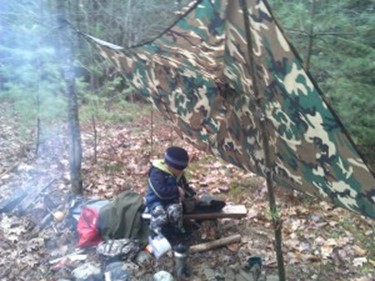
I haven’t really tested the space blanket under harsh conditions. The thing to remember about this is that it reflects heat and is not insulative. It’s silver on one side and olive drab on the other. Very light though, and compresses down fairly well. It reminds me of a small tarp to some extent. It is not like the cheap silver space blankets you see everywhere.
Conclusion
These are all good pieces of gear to have on hand if you want to carry something relatively light.
The lightest combination is the rip stop poncho with the space blanket. A very good solution for summer time.
The next heaviest is the military poncho with the poncho liner. This combination probably has the most uses with the individual pieces capable of many different functions.
The heaviest is the wool blanket with a poncho for shelter or keeping the rain off.
The main advantages of carrying these pieces of gear are:
- They are lighter than a sleeping bag.
- You can put them in your pack and forget about them until you need them. This way you don’t have to worry about losing the loft in your sleeping bag.
- In warmer weather they are perfectly acceptable for sleeping. People get so hung up on sleeping in a sleeping bag they forget there are other options out there.
I have at least six sleeping bags, but the equipment listed above is what I use in my personal GHB and hiking pack.
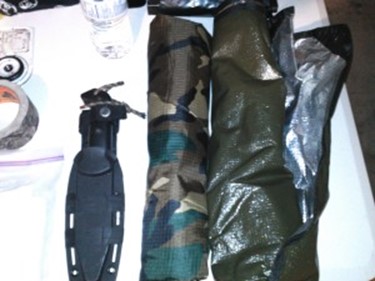
When selecting a “wool blanket” read the label (or description) carefully. Some of the more recognizable surplus outlets are now marketing “wool emergency blankets” with as much as 70% poly and only 30% wool. This might be okay if you are under cover from rain or snow, but I prefer the 70% wool variety. There are also some Swiss blankets around that are 90%, but of course more money.
Another thing to research is making a “Match Coat” from your wool blanket. Dave Canterbury has (or had) a couple of interesting how-to videos on this topic on his Pathfinder School website. A Matchcoat can be worn to dry the blanket and will keep you warm both night (as a blanket) or during the day (as a coat).
I’ve never had good results from a “space blanket” and I can tell you that listening to the thing all night when someone else is using one will deny you some sleep. The crinkling sound is enough to drive you crazy. Boy, but are they noisy!
Let me throw some weights at you all to help in the decision process.
These weights are on my digital scale.
All items can be at + or – 10%
That means that 2 identical looking pieces can weigh different.
So these are a good generalization.
Poncho Ripstop Military Style 10 oz
Poncho Current Issue Woodland 1 lb 8 oz
Poncho Old OD Vietnam + era 2 lb 12 oz
Poncho German Issue Cold War era 2 lb 1 oz
Poncho Liner Current Woodland 20 – 21 oz
Poncho Liner Current Marpat 22 oz
Poncho Liner 80′s OD 28 oz
Wool Blanket US Issue 80′s 3 lb 10 oz
Wool Blanket Swiss 80′s 2 lb 8 oz
US Issue Goretex Bivy 2 lb 1 oz
Just thought I would throw that in.
I got soo crazy with weights that I weighed all my web gear looking for a piece that was lighter than the rest. I have duffels full, it took me all day this winter and about a pint of whiskey. These weights are averages of what I have.
There are some great lightweight sleeping bags out there that pack down to the size of a football too.
Start now to make sure you are staying prepared.
Via: shtfblog




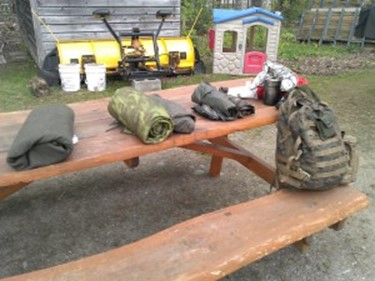
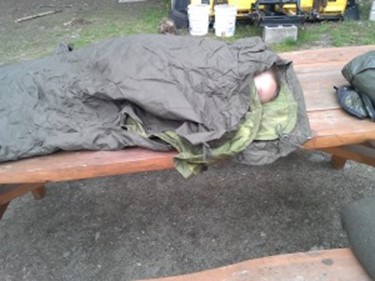
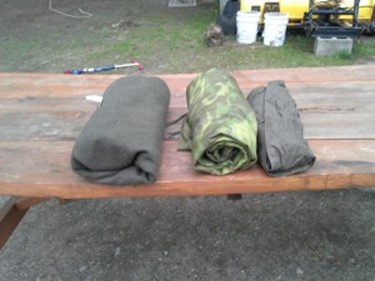
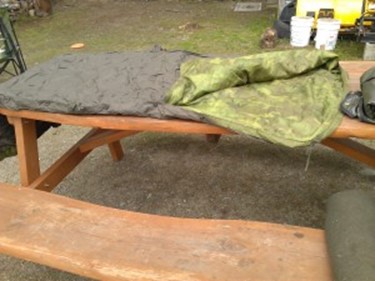
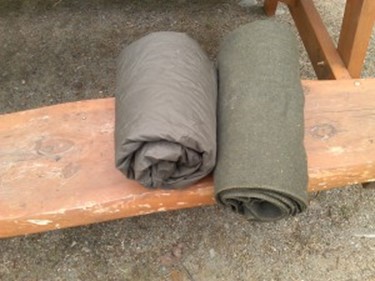
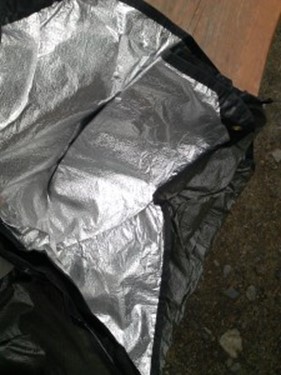
 Follow
Follow
Leave a Reply